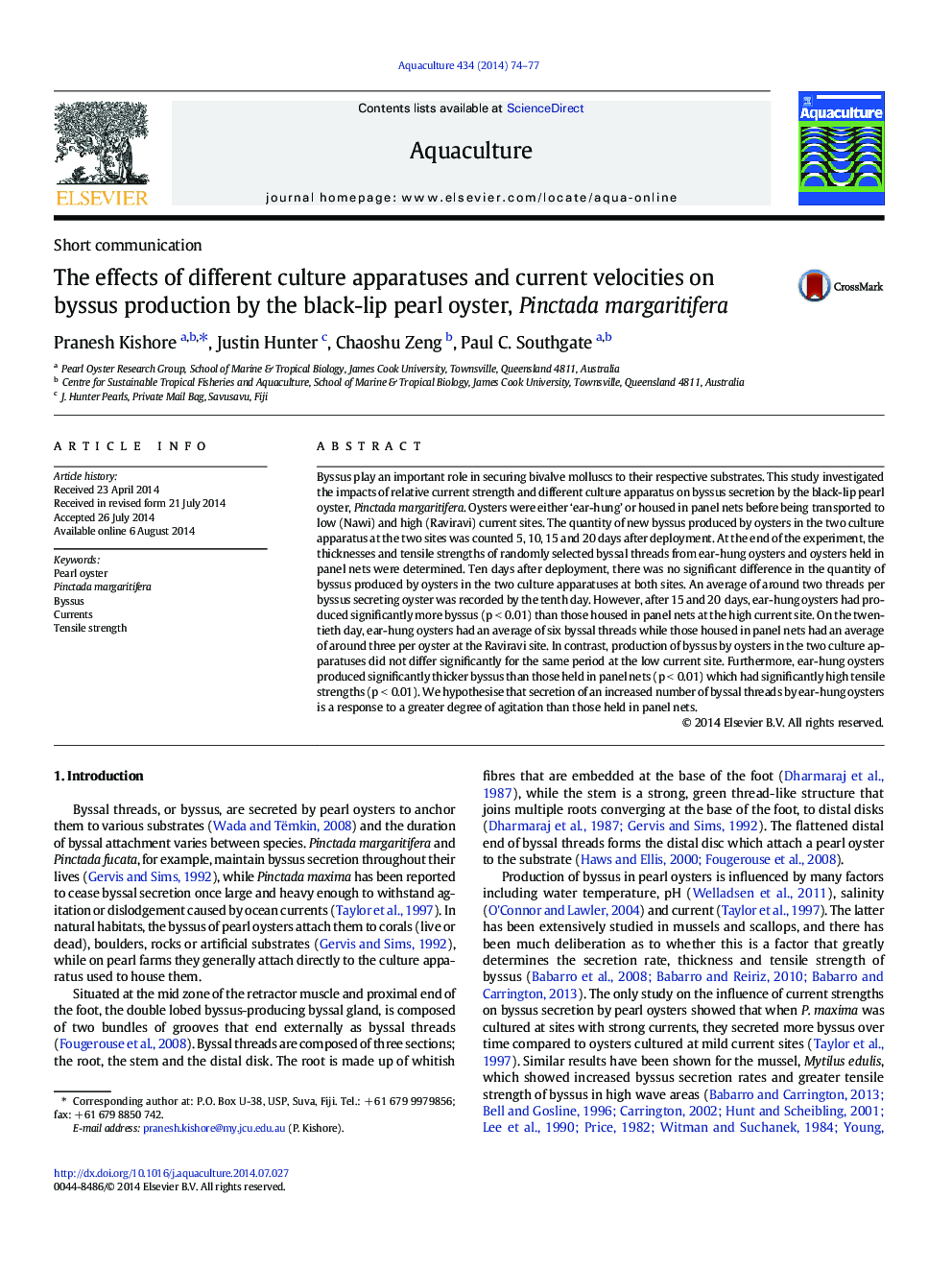| کد مقاله | کد نشریه | سال انتشار | مقاله انگلیسی | نسخه تمام متن |
|---|---|---|---|---|
| 2421712 | 1552853 | 2014 | 4 صفحه PDF | دانلود رایگان |

• Ear-hung oysters produced more byssus than panel net cultured oysters.
• Ear-hung oysters produced thicker and stronger byssus then panel net housed oysters.
• This can be a cause for more ‘circled’ pearl production by ear-hung oysters.
Byssus play an important role in securing bivalve molluscs to their respective substrates. This study investigated the impacts of relative current strength and different culture apparatus on byssus secretion by the black-lip pearl oyster, Pinctada margaritifera. Oysters were either ‘ear-hung’ or housed in panel nets before being transported to low (Nawi) and high (Raviravi) current sites. The quantity of new byssus produced by oysters in the two culture apparatus at the two sites was counted 5, 10, 15 and 20 days after deployment. At the end of the experiment, the thicknesses and tensile strengths of randomly selected byssal threads from ear-hung oysters and oysters held in panel nets were determined. Ten days after deployment, there was no significant difference in the quantity of byssus produced by oysters in the two culture apparatuses at both sites. An average of around two threads per byssus secreting oyster was recorded by the tenth day. However, after 15 and 20 days, ear-hung oysters had produced significantly more byssus (p < 0.01) than those housed in panel nets at the high current site. On the twentieth day, ear-hung oysters had an average of six byssal threads while those housed in panel nets had an average of around three per oyster at the Raviravi site. In contrast, production of byssus by oysters in the two culture apparatuses did not differ significantly for the same period at the low current site. Furthermore, ear-hung oysters produced significantly thicker byssus than those held in panel nets (p < 0.01) which had significantly high tensile strengths (p < 0.01). We hypothesise that secretion of an increased number of byssal threads by ear-hung oysters is a response to a greater degree of agitation than those held in panel nets.
Journal: Aquaculture - Volume 434, 20 October 2014, Pages 74–77